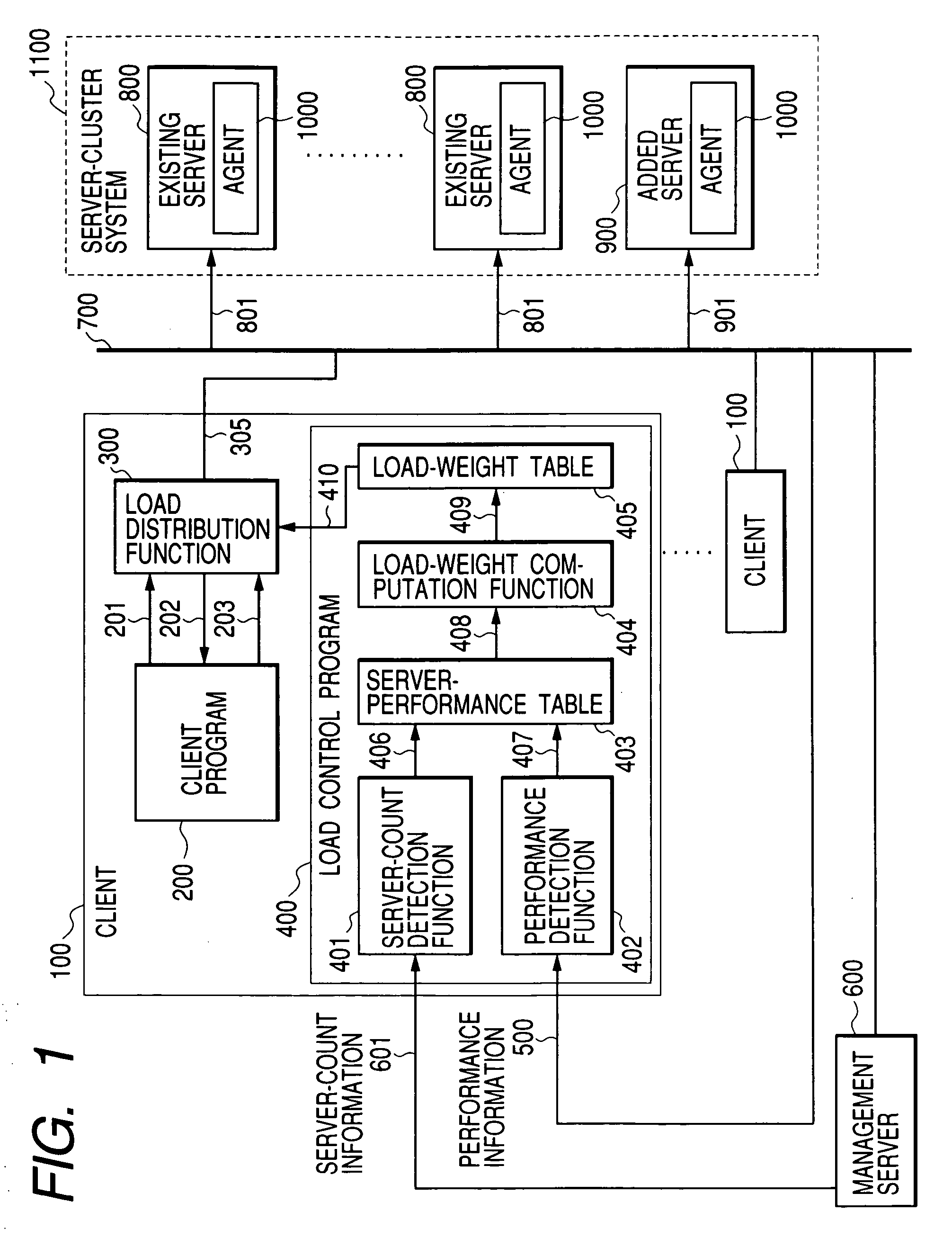Load distribution method and client-server system
a load distribution and client-server technology, applied in the direction of digital transmission, securing communication, instruments, etc., can solve the problems of imposing an upper limit on the number of requests transmissible out to the added server, the time that the newly added server takes to process requests cannot be prevented, and the load results are uneven among the servers
- Summary
- Abstract
- Description
- Claims
- Application Information
AI Technical Summary
Benefits of technology
Problems solved by technology
Method used
Image
Examples
first embodiment
[0040]FIG. 1 is a block diagram showing a rough configuration of a client-server system implemented by the present invention. The client-server system implemented by this embodiment comprises a plurality of clients 100 and a server-cluster system 1100 connected to the clients 100 by an inter-server network 700. A client 100 transmits a request to the server-cluster system 1100 as a request for a service, and receives a result of the request from the server-cluster system 1100. In the client 100, a load distribution program 300 and a load control program 400 are executed. It is to be noted that a request made by the client 100 and transmitted to the server-cluster system 1100 as a request for processing of a service is also referred to hereafter as an output request.
[0041] The load control program 400 creates a load-weight table 405, which contains data used by the client 100 to determine the number of requests to be assigned and transmitted out to each of the servers composing the s...
second embodiment
[0116] As explained so far, when a new directory server 2200 is added to the directory-server-cluster system 2600 handling each request made by a client 2000 as a request for acquisition of a file and, hence, changes the configuration of the directory-server-cluster system 2600 in the storage system implemented by the present invention, the number of files stored in a storage apparatus 2300 as files, of which the newly added directory server 2200 serves as a new designated directory server taking charge, is set at a value small in comparison with that set for each other already existing directory server 2100. By setting the number of such files at a small value, the processing carried out by the newly added directory server 2200 can be prevented from becoming stagnant and the processing efficiency of the directory-server-cluster system 2600 as a whole can thus be increased.
[0117] In the first and second embodiments described so far, the client 100 and the client 2000 respectively co...
PUM
 Login to View More
Login to View More Abstract
Description
Claims
Application Information
 Login to View More
Login to View More - R&D
- Intellectual Property
- Life Sciences
- Materials
- Tech Scout
- Unparalleled Data Quality
- Higher Quality Content
- 60% Fewer Hallucinations
Browse by: Latest US Patents, China's latest patents, Technical Efficacy Thesaurus, Application Domain, Technology Topic, Popular Technical Reports.
© 2025 PatSnap. All rights reserved.Legal|Privacy policy|Modern Slavery Act Transparency Statement|Sitemap|About US| Contact US: help@patsnap.com



